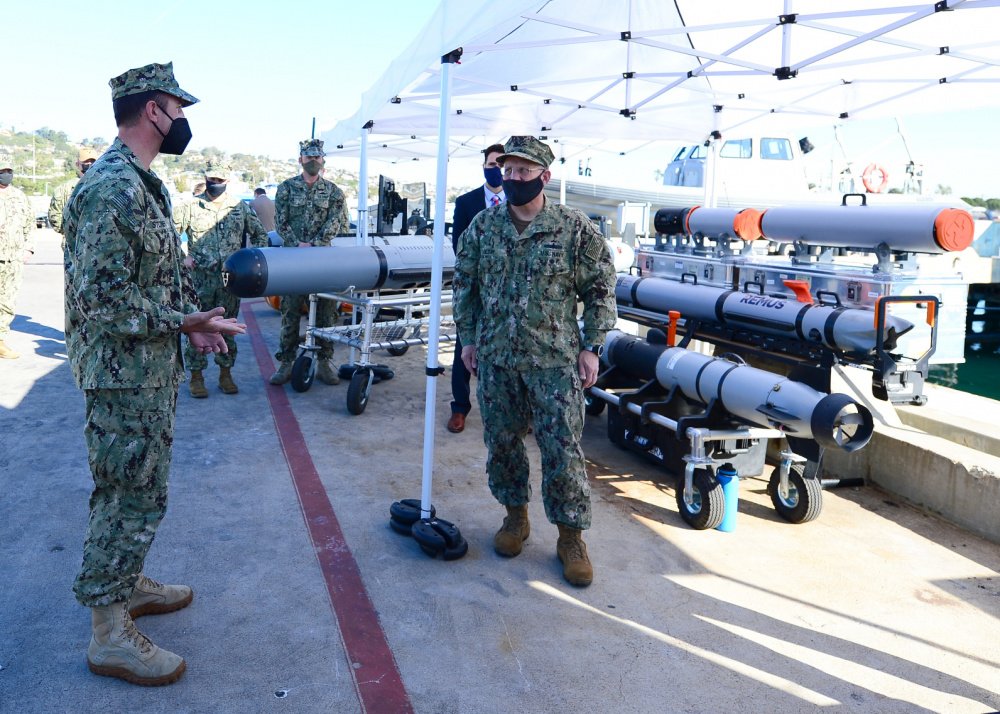
Chief of Naval Operations Adm. Mike Gilday visited components of Explosive Ordnance Disposal Group (EODGRU) 1 at Naval Base Point Loma, Calif., Feb. 23, to learn how the Navy Expeditionary Combat Force (NECF) is utilizing and developing unmanned system (UMS) capabilities that enable the fleet and Joint Force to execute a full spectrum of military operations.
Operations Specialist 1st Class Sean McNamara briefed Gilday on how the Mark 18 Model 1 Swordfish and Mark 18 Model 2 Kingfish unmanned underwater vehicles (UUV) currently used by Navy EOD give theater commanders a wide range of options in the maritime domain.
“He is extremely knowledgeable about UUVs, and we talked about my experience employing their capabilities,” said McNamara, a UMS operator who has deployed to U.S. 5th Fleet and U.S. 7th Fleet while with Explosive Ordnance Disposal Mobile Unit (EODMU) 1.
Lt. Cmdr. Nick Stoner and the CNO discussed emerging technologies being developed by Navy EOD and integration of those capabilities with surface, submarine and special operations forces.
“It’s really about the aggregation of enabling technologies,” said Stoner about the development of advanced sensors, deep-learning algorithms and data transport pathways. “This is allowing us to process and analyze data on the vehicles, during mission and disseminate that critical information in the timely manner required by the fleet.”
“Our engineering teams are the behind the scenes heroes. Multivehicle collaborative autonomy is not a future concept anymore; the capabilities will be embedded in our fleet vehicles sooner than many anticipate,” said Stoner, a Navy EOD officer at EODGRU-1.
Further advancements will increase the capabilities of Navy EOD to illuminate and reduce threats that prohibit freedom of maneuver in the blue water and littoral environments, said Stoner.
“It was a great,” said McNamara about Gilday’s visit, adding “it doesn’t get much better” than earning the CNO’s challenge coin.
EODGRU-1 is a critical part of the NECF that clears explosive hazards to provide access to denied areas; secures the undersea domain for freedom of maneuver; builds and fosters relationships with capable and trusted partners; and protects the homeland.
Operating from Naval Amphibious Base Coronado, Calif., EODGRU-1 oversees the manning training and equipping of EODMU-1, 3, 5 and 11; Mobile Diving and Salvage Unit (MDSU) 1; EOD Expeditionary Support Unit (EODESU) 1; and EOD Training and Evaluation Unit (EODTEU) 1. EODGRU-1 is also capable of deploying to command task forces in theater.




